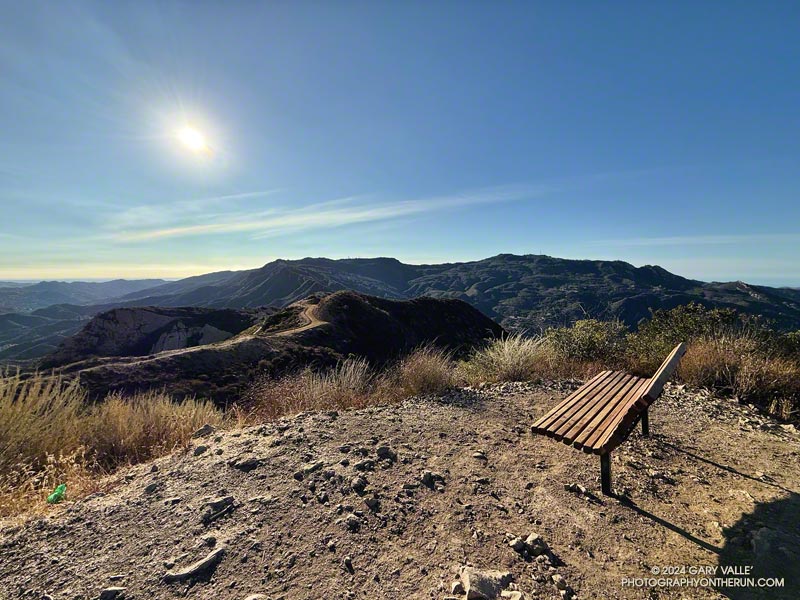
This bench on top of Calabasas Peak is one of several new benches “with a view” I’ve run across lately. Here’s another one at Ahmanson Ranch (Upper Las Virgenes Canyon Open Space Preserve).

This bench on top of Calabasas Peak is one of several new benches “with a view” I’ve run across lately. Here’s another one at Ahmanson Ranch (Upper Las Virgenes Canyon Open Space Preserve).
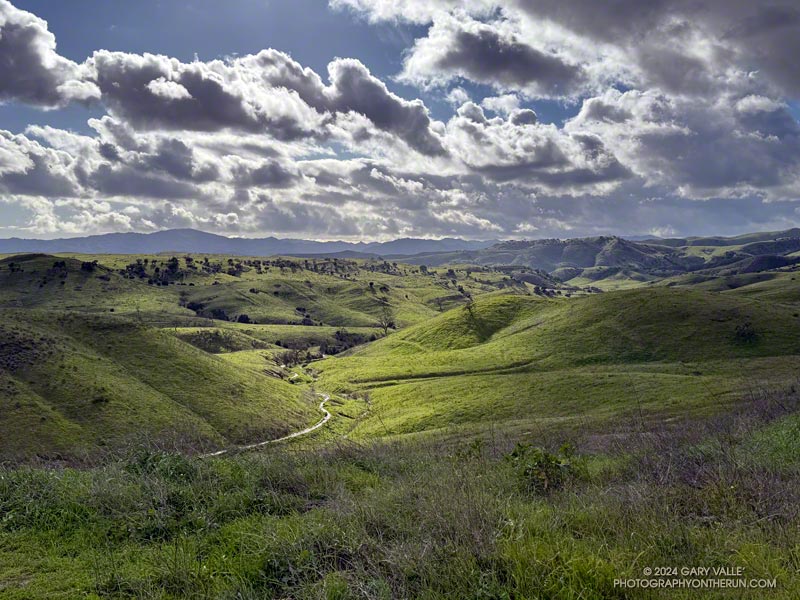
A very wet East Las Virgenes Canyon and Trail on February 8, 2024, following seven days of rain. This was by far the wettest start to February in Los Angeles since recordkeeping began in July 1877.
Related post: Ahmanson Ranch and Upper Las Virgenes Creek After Six Days of Rain
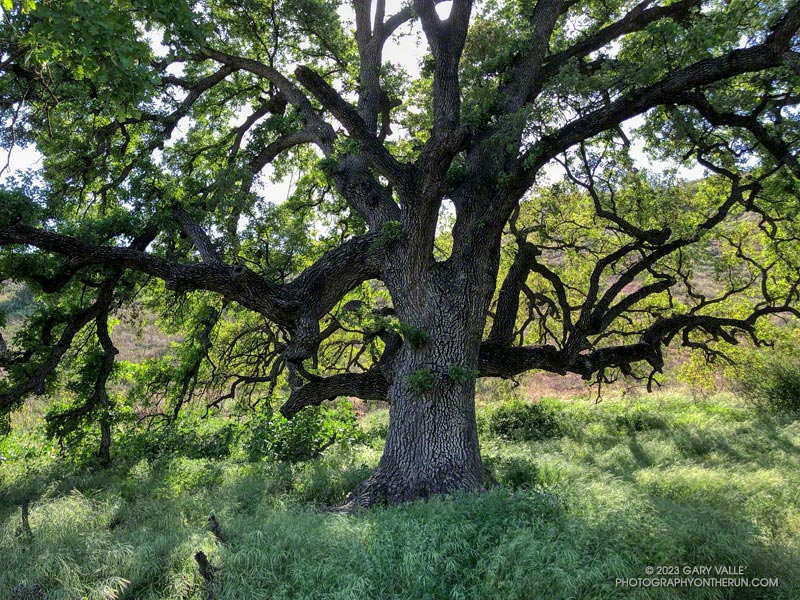
This large valley oak lives near the Upper Las Virgenes Canyon Trailhead of Upper Las Virgenes Canyon Open Space Preserve (aka Ahmanson Ranch). There used to be several large valley oaks near the trailhead, but they were killed in the 2018 Woolsey Fire.
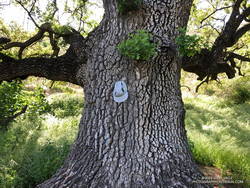
This tree is as large as any of the valley oaks I see along the trails at Ahmanson. I estimate it’s diameter to be a little under four feet. That’s not large by Northern California standards, but it is still a sizable tree. Valley oaks have a tougher time here.
Along with coast live oak, the valley oak is one of the iconic species of oak-grasslands at Ahmanson Ranch. In the past 20 years, valley oaks at Ahmanson Ranch have been more severely impacted by drought, fire, and rising temperatures than live oaks. In the not too distant future, the valley oak may become a relic at Ahmanson, much like the blue oak that died earlier this year.
Some related posts: Ahmanson Valley Oaks Finally Get Their Leaves, Ahmanson Valley Oaks Battling Drought, Ahmanson Blue Oak Succumbs to Climate Change, and Many More
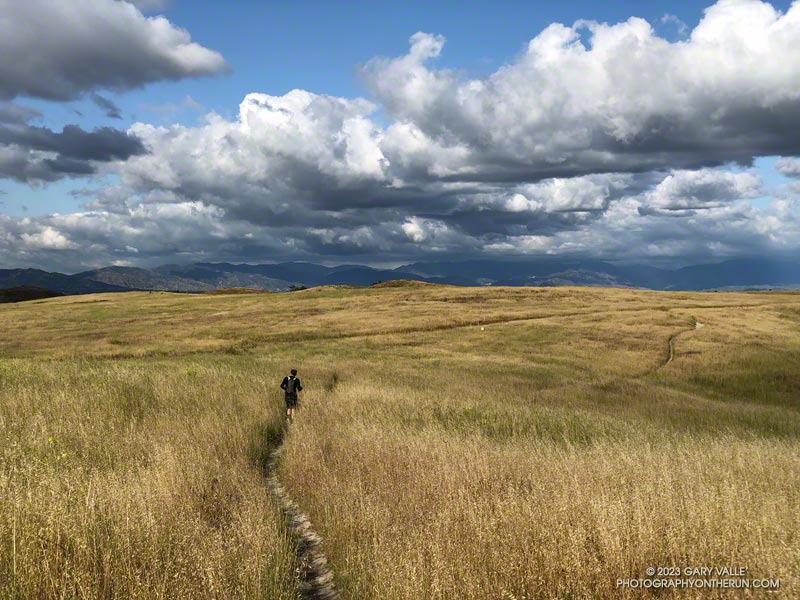
Brett was down for a few days, and as an initial run we did a loop from the Victory Trailhead of Ahmanson Ranch, through part of Las Virgenes Canyon, up onto Lasky Mesa, and then back to the trailhead.
Upper Las Virgenes Creek still flowed. Valley oaks were full with new leaves. The green grasses of the rain season had finally turned, and rare May cumulus clouds were painted on postcard skies.
It was an outstanding run!
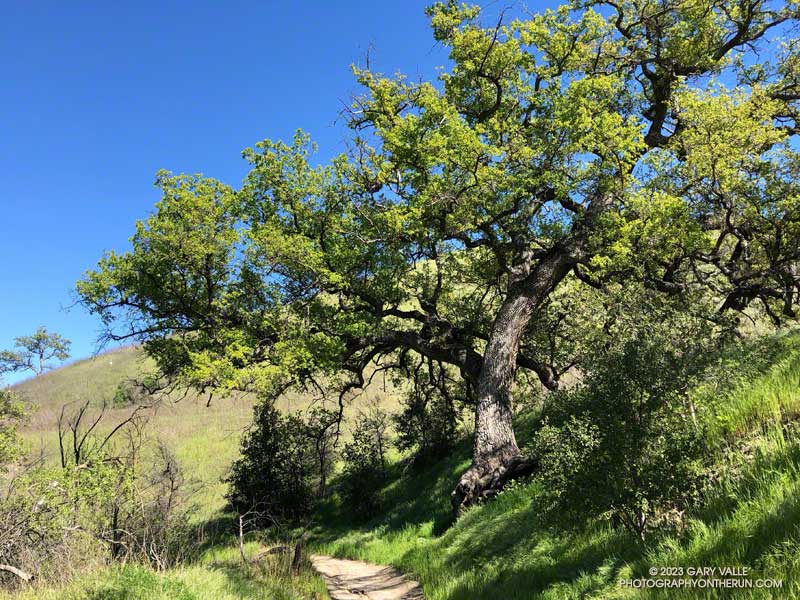
According to preliminary NWS reports, Downtown Los Angeles (USC) recorded average monthly temperatures well below normal in November 2022 and January thru March 2023. March was particularly cool, with an average high of about 64 degrees and an average low of about 50 degrees.
Besides high heating bills, Southern California’s unusually cold Winter affected several seasonal processes, one of which was when the valley oaks at Ahmanson budded and grew new leaves.
The leaves of valley oaks at Ahmanson Ranch typically turn in mid-December, and the trees usually begin to leaf out during the latter half of February. Depending on the tree’s microclimate, the emergence of new leaves may vary by a week or more.
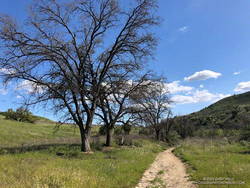
The earliest I’ve photographed a valley oak at Ahmanson sprouting new leaves was February 3, 2015. Last year, a valley oak had new leaves on February 10, 2022.
The latest I’ve seen valley oaks sprouting new leaves is this year — from about March 20, 2023, in favored locations to April 4, 2023, in cooler areas such as Las Virgenes Canyon.
Prior to this year, the latest I’ve photographed a valley oak at Ahmanson with new leaves was March 9, 2009.
(Officially named Upper Las Virgenes Canyon Open Space Preserve, most users refer to the open space area as Ahmanson Ranch or simply Ahmanson.)
Some related posts: Revitalized Valley Oak at Ahmanson Ranch, Goldfields Are Blooming and Valley Oaks Greening, Valley Oak Leaf
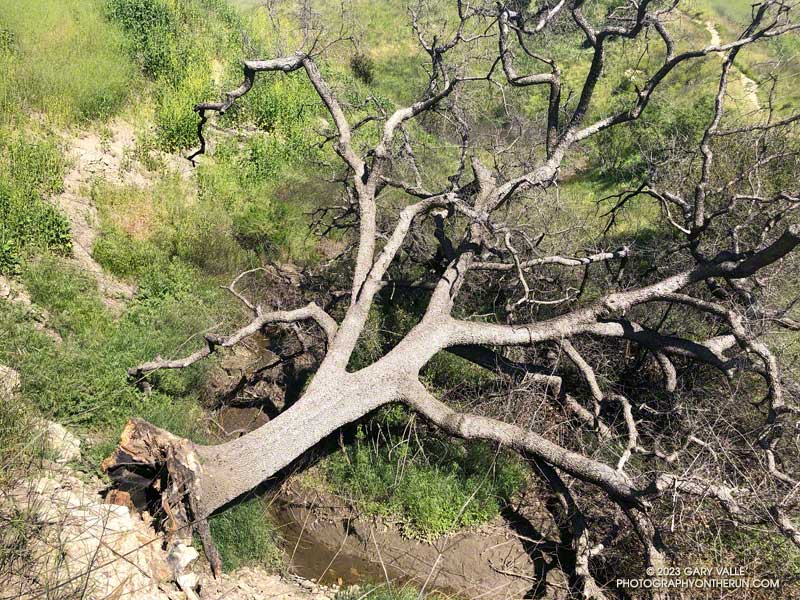
When I rounded the corner on the Lasky Mesa Trail, I could hardly believe my eyes. The Ahmanson Blue Oak was gone. Where there had been a sprawling oak, there was nothing.
Crossing an eroded section of trail and walking over to the edge of the old roadbed, I looked down the slope. Much like this valley oak along Rocky Peak Road, the entire Ahmanson blue oak had fallen from its hillside perch near the bottom of the canyon.
Oaks in the oak-grasslands of Upper Las Virgenes Canyon Open Space Preserve have had a tough time with climate change. The five-year drought from July 2011 to October 2016, increasing temperature, and the 2018 Woolsey Fire have combined to kill a large number of trees.
This blue oak was one of very few found at the southern extent of its range.
Related posts: Ahmanson Blue Oak, Ahmanson Valley Oaks Battling Drought, After the Woolsey Fire: Ahmanson Ranch, Fallen Oak, Valley Oak Savanna